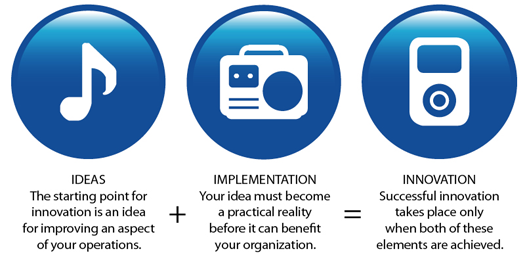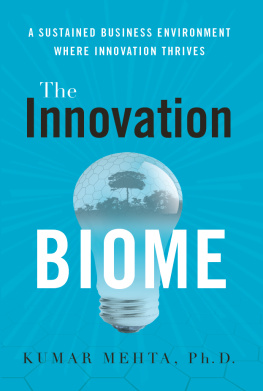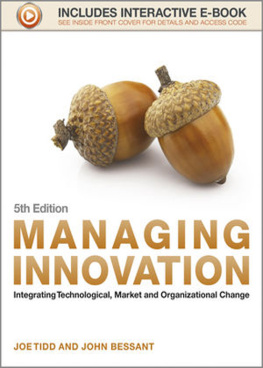DK - Innovation
Here you can read online DK - Innovation full text of the book (entire story) in english for free. Download pdf and epub, get meaning, cover and reviews about this ebook. year: 2009, publisher: DK Publishing, genre: Business. Description of the work, (preface) as well as reviews are available. Best literature library LitArk.com created for fans of good reading and offers a wide selection of genres:
Romance novel
Science fiction
Adventure
Detective
Science
History
Home and family
Prose
Art
Politics
Computer
Non-fiction
Religion
Business
Children
Humor
Choose a favorite category and find really read worthwhile books. Enjoy immersion in the world of imagination, feel the emotions of the characters or learn something new for yourself, make an fascinating discovery.
Innovation: summary, description and annotation
We offer to read an annotation, description, summary or preface (depends on what the author of the book "Innovation" wrote himself). If you haven't found the necessary information about the book — write in the comments, we will try to find it.
DK: author's other books
Who wrote Innovation? Find out the surname, the name of the author of the book and a list of all author's works by series.
Innovation — read online for free the complete book (whole text) full work
Below is the text of the book, divided by pages. System saving the place of the last page read, allows you to conveniently read the book "Innovation" online for free, without having to search again every time where you left off. Put a bookmark, and you can go to the page where you finished reading at any time.
Font size:
Interval:
Bookmark:

80 Strand, London WC2R 0RL
LONDON, NEW YORK,
MUNICH, MELBOURNE, DELHI
London WC2R 0RL, England
Copyright 2008 Dorling Kindersley
Text Copyright 2008 John Bessant
Digital conversion by DK Digital Content, London and DK Digital Media, Delhi.
No part of this publication may be reproduced, stored in a retrieval system,
or transmitted in any form or by any means, electronic, mechanical, photocopying, recording, or otherwise, without the prior written permission of the copyright owner.

In todays dynamic and turbulent world, organizations face a stark challengechange or perish. Unless they keep renewing their products and services, and update the ways they create and deliver them, they risk being overtaken by competitors. Innovationthe process of changeis critical to the success of all organizations, large or small, in both the private and public sectors.
Most managers understand the importance of the topic. But making it happen requires a systematic, hands-on approach. We have to learn to manage innovation, and Innovation provides a framework for doing this. Key elements in successful leadership of innovation include developing a clear strategic vision and communicating it, searching for innovation triggers, choosing a balanced portfolio of projects, and delivering these projects on time and within budget.
Innovation is about human creativity, organized and applied across the organization. As a manager, you need to understand how the innovation process works and how you can mobilize this creativity. By using the guidelines and tools in this guide, you will develop the skills you need to become an architect of change within your organization.
Understanding Innovation
Innovation is vital to the success of any business. But before you can apply it to your own organization, you need to understand what it is, why it is important, and how it applies to different business areas.
The word innovation today appears everywhereon company websites, in advertisements for everything from hairspray to healthcare, on the lips of politicians, and in news features. However, while the word itself is popular, the concept of innovation remains poorly defined.
The word innovation comes from the Latin words in and novare, meaning to make something new, to change. In principle, thats something anyone can doimagination and creativity come as standard equipment for human beings. And its something weve been doing since the earliest days when our ancestors lived in cavesthe reason that we dont still live there is because of innovation. Working out better ways of hunting, mastering fire and tool-making, learning about agriculture, construction, transportationquite simply, the history of civilization is about innovation.
Theres still plenty of room for ideas to improve the world we live inand we are still really good at coming up with them. But innovation isnt just about bright ideas; its also about putting those ideas into practice. No matter how good the idea, it will not benefit your organization if it cannot be transformed into a practical change in the work process that increases efficiency or profit. A working definition of innovation would be: innovation = ideas + implementation.
Thinking about managing innovation raises three key issues. First, why should we innovate? Innovation always involves risks, and the rewards are not always obvious. Second, what can we change? You need to understand the options for innovation before you can make decisions on where to focus your efforts. And finally, how can we make it happen?

The innovation process
 Look at all areas
Look at all areasHuman history shows that any area of life can benefit from innovation. Think about ways of improving even the most well-established systems in your organization.
 Keep an open mind
Keep an open mindConsider all ideas, no matter how strange, in their initial stages. Something that appears totally impractical at first may lead to useful thinking about other, more workable solutions.
In Charles Darwins famous theory of evolution, survival depends on an ability to change. Those species that do not adapt and change to cope with an altering environment simply die out. The same can be said to be true of business organizations as well.
If you do not change what you create and offer the world (your products and services), you run the risk of being pushed aside by organizations that do. And if you want your businesses to grow, you are unlikely to achieve this if you do not offer new products and services in new ways. This survival idea may be obvious in a competitive business worldbut it is just as important in nonprofit organizations and public services.
Innovation is essential to survival, and also to development and profit. There are many ways in which innovation can improve an organizations revenue and customer base, and defend against competitors. These range from making existing processes more efficient, to producing something before competitors can imitate it, to completely rewriting the rules of competition in your market.
A faster, cheaper, or more efficient production process gives you an instant advantage.
Getting into a market early establishes your brand before the competition has time to develop.
Offering something too complex for others to imitate places your product at a premium.
Changing the base of your competition (eg, from price to quality) can undermine your rivals.
New trademarks and patents generate revenue through fees for their use.
Offering a product no one else has access to guarantees you will have no competition.
Offering people something absolutely novel can create an entirely new market.

In order to manage the process of making innovations happen, it is important to understand the different ways in which change can be categorized. In this field it is not a case of one size fits allyou need to tailor your approach. One way is to look at how much newness is involvedfrom incremental small steps to radical leaps forward.
Font size:
Interval:
Bookmark:
Similar books «Innovation»
Look at similar books to Innovation. We have selected literature similar in name and meaning in the hope of providing readers with more options to find new, interesting, not yet read works.
Discussion, reviews of the book Innovation and just readers' own opinions. Leave your comments, write what you think about the work, its meaning or the main characters. Specify what exactly you liked and what you didn't like, and why you think so.
















